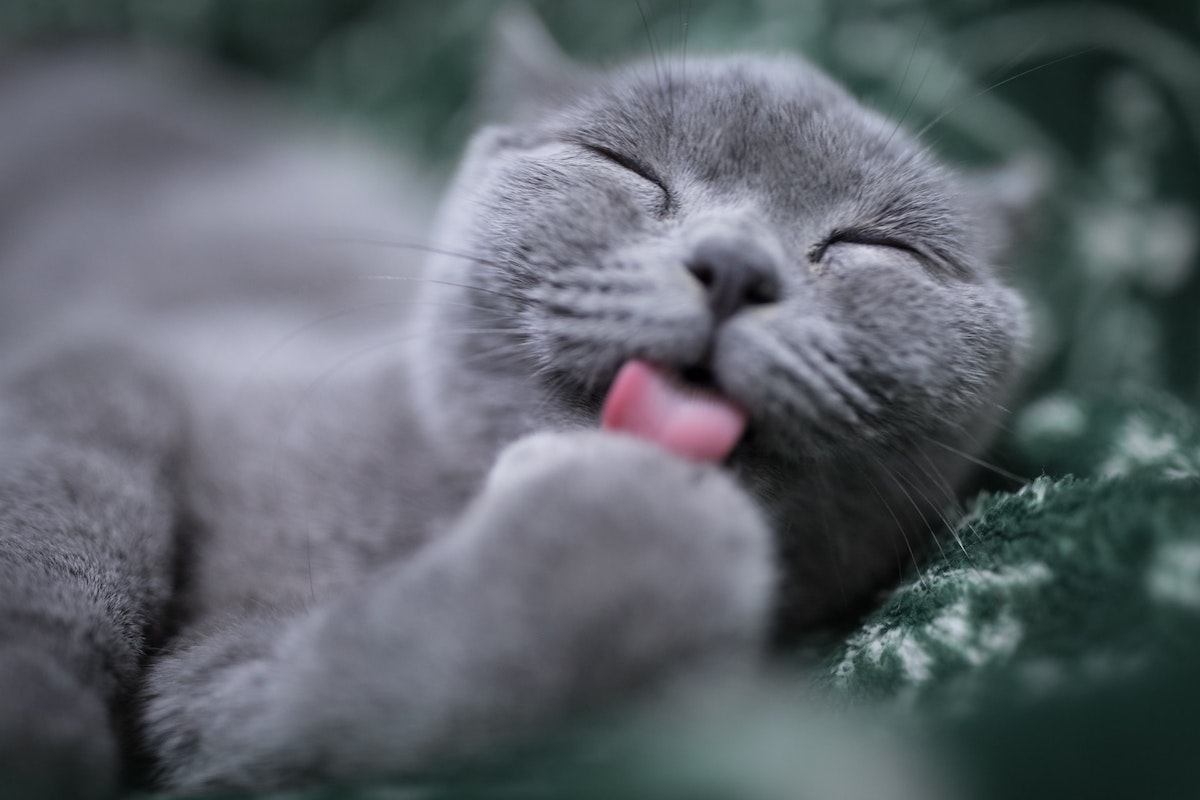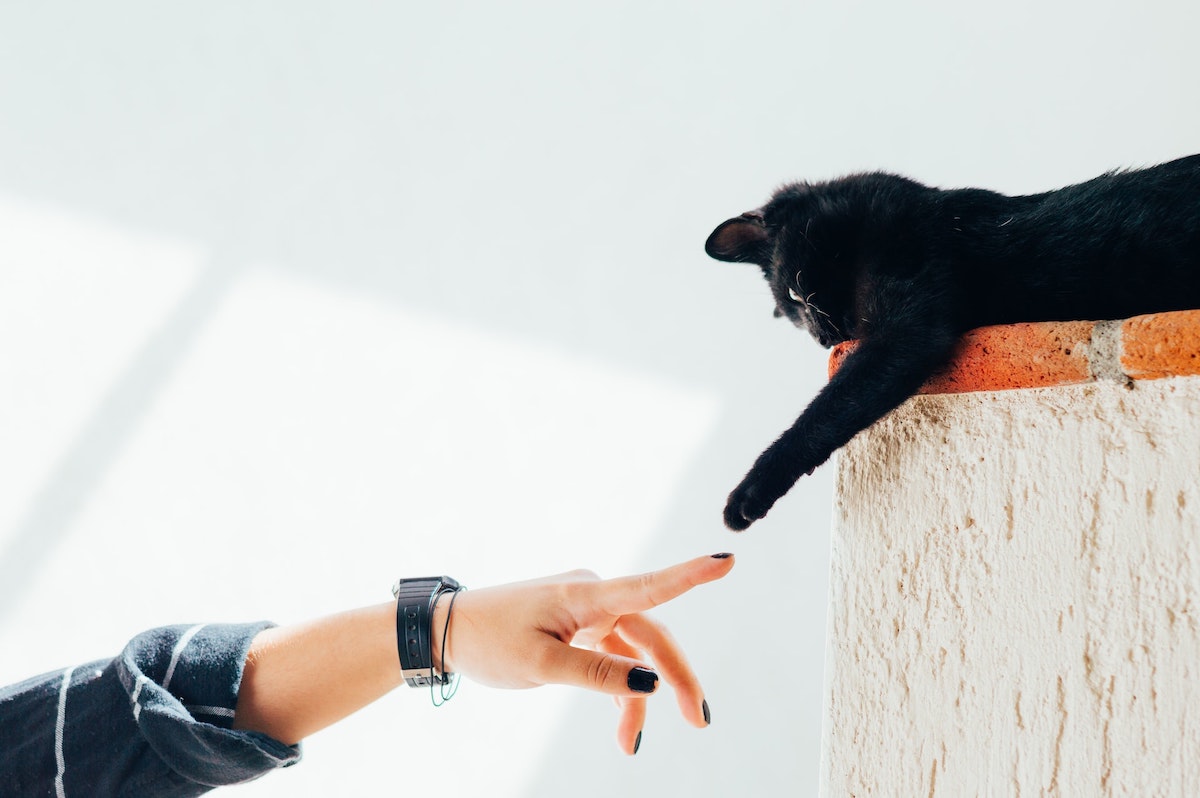The human being has a perfect means of communication called speech. Still, in addition to that, there are also many non-verbal ways to convey one’s thoughts and emotional state. Often, facial expressions, hand movements or posture will tell the interlocutor much more than spoken words. Cats also make full use of expressions, body language, and nonverbal cues to convey information and express their feelings and reactions.

The common known feline gestures such as the arched back with rearing hair, the flattened ears, the curved fluffy tail and the bared teeth (a threat and warning for a dangerous enemy) or the light, laid-back gait near the owner’s legs with a tail raised like a “pipe” (friendliness, good mood) are familiar to almost everyone, but not everyone knows that cat sign language includes dozens of ways to express one’s emotions. Observant and loving owners are able to determine the mood and desires of their pet by the expression of the muzzle, the adopted posture, the nature of the movements of the tail and other signs.
Cat Body Language: Poses and Movements
The easiest way to recognize the desires and emotional state of a pet is by body position, gait, and other well-recognized signs. In communication with the owner, the cat most often shows feelings as follows:
- Complete trust, friendliness – the cat lies on its back, the abdomen is not protected and is ready for scratching.
- Attachment – “trampling” the owner with the front paws, accompanied by a purring, while the cat slightly releases its claws.
- An attempt to attract attention, a request – the cat winds between the owner’s legs, rubs against them, the tail is straight and raised high up.
- Caution – tense, trembling tail, flattened ears. Often, the cat shows such emotions when they see an object that irritates them (vacuum cleaner, hair dryer).
- Feigned or calm – the cat sits in a relaxed position, the tail is motionless, the pet is carefully licking the fur.
- Greeting – rubs against the legs, raises the front paws.
- Curiosity, an extreme degree of attention – the cat sits motionlessly and does not take its eyes off the point of interest, the pupils are dilated.
- Gratitude – soft pushing of the owner with the forehead or stroking with the paws.
- Request – sits straight, not taking its eyes off the owner, waiting for attention. Often, this is how the cat asks the owner to open the door, sitting next to it.
- Absolute trust – while sitting or standing, the cat turns its back to the owner.
- Indecision – increased licking, the more intense the movements of the tongue, the more serious the dilemma is for the pet.
The meaning of cat gestures often depends on the individual characteristics of the animal and its particular breed (find out more about your cat by taking a cat breed test). Like people, cats can be more restrained or, conversely, open and relaxed.

The Tail as a Mood Indicator
Cat gestures become even more expressive with the help of their mobile, flexible tail. A cat’s tail is the real indicator of their mood. Observant owners can surely highlight the following basic meanings of cat tail gestures:
- Lowered tail – fatigue, discontent or disappointment.
- Tucked tail – fear, resentment.
- The tail in the form of a “pipe” indicates that the cat is in a good mood, full and happy with everything.
- Tail twitching expresses displeasure, annoyance, or warning.
- An increase in the amplitude of movements along the entire length, or tail strikes on the sides – increasing tension. In this case, the owners should leave the pet alone for a while.
- Wiggling of the tip of the tail – interest.
- A fluffy, highly raised or curved tail signals aggression.
- Tail moving on the floor – anger or hunting passion.
Cat gestures with the tail are not only for the owners. They are also one of the main ways to communicate with other members of their species.
Ears, Eyes and Whiskers
The muzzle of a cat can only seem inexpressive to a person who is absolutely not familiar with these animals. In fact, the cat’s facial muscles are very mobile, their ears are able to turn 180 °, and the large eyes display the full range of feelings and moods. There are cat breeds with especially large eyes, like the Persian.
Ears
Cat ears are mobile, their position can tell you a lot about the actual intentions or mood of the pet:
- Vertical position, auricle directed forward – ready for play and communication.
- Pressed to the head – readiness for defense or aggression.
- Ear twitching – irritation, discontent.
- Ears to the sides – bewilderment, surprise.
Eyes
Half-closed eyes indicate complete peace and trust, a slight squint means discontent and challenge, dilated pupils – fear, constricted pupils – readiness for aggression or play.
Whiskers
The position of the whiskers in a cat clearly indicates the following types of mood:
- Relaxed state – calmly loosened on the sides of the head.
- Interest, curiosity – the whiskers are directed forward.
- Pressed to the sides of the head – anxiety, fear, puzzlement.
- Pressed down – a bad mood or well-being.
Having deciphered your cat’s sign language, the owners can achieve almost complete understanding with a pet and reduce the likelihood of conflict or simply unpleasant situations for both parties to a minimum.
That is why, it is important to closely observe your pet and record very new behavior you notice (in your memory of course, or even better – on camera). In order to make sure you never lose all the funny and cute data you’ve gathered over years, you can use this service. It allows you to affordably transfer data onto different devices and gadgets